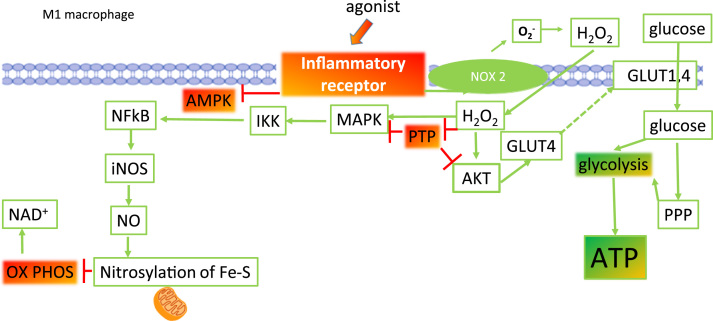Fig. 6.
ROS production is required for the switch to oxidative phosphorylation in M1 macrophages. Activation of inflammatory receptors (such as the toll-like receptor TLR4 by LPS) on macrophages increases the localization of Phox to the membrane, the activation of NOX2 and the production of O2-.. O2-. can dismutate to H2O2 that is freely permeable through the membrane. Intracellular H2O2 is a potent inhibitor of protein tyrosine phosphatases (PTP), that result in activation of AKT and MAPK signalling. AKT activation promotes the trafficking of GLUT4 to the membrane and facilitates glucose uptake for glycolysis. MAPK activation triggers phosphorylation of IκK, degradation of IκB and the release of active NFκB. Downstream of NFκB, an increase in expression of proinflammatory genes is observed, including inducible nitric oxide synthase (iNOS). In the presence of arginine, iNOS catalyses the formation of NO. and, probably via peroxynitrite, promotes the nitrosylation of iron-sulphur (Fe-S) cluster proteins in the electron transport chain. Together glycolysis is promoted and oxidative phosphorylation is inhibited via ROS.

